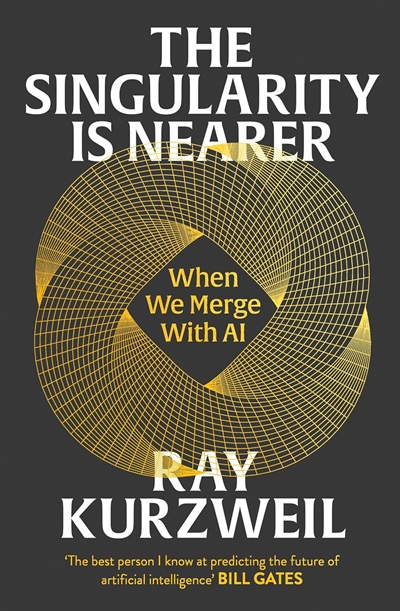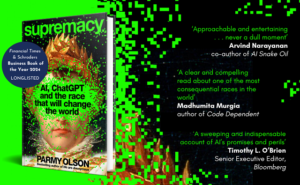Exploring the intersection of human evolution and AI’s exponential rise
When we think about artificial intelligence today, it’s hard not to let our minds drift into the future—wondering what it means for us as individuals and as a society. It’s 2025, and we’re already feeling the profound impact of Large Language Models (LLMs) in our daily lives. AI is no longer a futuristic concept; it’s deeply embedded in our present, transforming how we work, communicate, and make decisions.
This growing presence of AI sparked a curiosity in me—especially coming from a background in software technology, primarily in the telecom and networking domains. I wanted to explore beyond the buzzwords and understand the broader picture. That’s when I came across The Singularity is Nearer – When We Merge with AI by Ray Kurzweil.
Kurzweil, a futurist and renowned thinker in the AI space, offers a sweeping vision of what lies ahead as humans and machines continue to converge. The book is an eye-opener—not just for AI enthusiasts but for anyone who wants to understand how technology might redefine the human experience in the coming decades.
From how the human brain functions to the origins and evolution of AI, the book delves into diverse topics. It lays out a roadmap for what’s to come: the rise of Artificial General Intelligence (AGI), merging our brains with AI via nanorobots, the dawn of conscious machines, and breakthroughs in fields like vertical farming, renewable energy, and 3D printing. Kurzweil even touches on existential risks, offering a sobering yet hopeful perspective on humanity’s future.
Key Takeaways That Stood Out to Me:
-
2045 and the Singularity: According to Kurzweil, by 2045, nanotechnology will have advanced to the point where nanobots can connect our brains to the cloud—ushering in the ‘singularity’ without the need for invasive brain-machine interfaces.
-
Radical Life Extension: He suggests that the first person to live for 1,000 years may already be among us, thanks to AI-driven innovations in health and aging.
-
Emerging Technologies: AI will accelerate developments in vertical farming, nanotech, and 3D printing, fundamentally reshaping how we live, build, and consume.
-
AGI by 2029: Kurzweil predicts that Artificial General Intelligence will arrive much sooner than most expect—by the end of this decade.
-
Understanding Our Brain Is Key: A significant portion of the book explores the cerebellum and neocortex, emphasizing that understanding human intelligence is crucial to building powerful AI.
-
The Human Epochs: We’re nearing the end of the fourth epoch in human evolution—where we began storing information externally—and entering an era where digital skills could make us ‘superhuman’.
While the book paints an optimistic picture of AI-driven transformation, I believe it’s also important to remain grounded in the realities of implementation. For example, the rise of vertical farming, nanotechnology, and 3D-printed infrastructure will require not just technical readiness, but also political will and global economic alignment. Innovation doesn’t exist in a vacuum—it needs policy, acceptance, and equitable access to flourish.
Kurzweil’s book is not just a futuristic manifesto. It’s a culmination of insights drawn from decades of research, conference discussions, conversations with tech leaders, and his own experience in shaping AI thinking since the 1960s. His narrative is remarkably clear and visionary, without drifting into science fiction. It’s grounded in science, yet expansive in imagination.
For anyone curious about where AI is taking us—and how we as humans can prepare for this journey—The Singularity is Nearer is a must-read. It’s more than a book; it’s a reflection on what it means to be human in an age where the line between man and machine is starting to blur.
Link to purchase: https://www.amazon.in/Singularity-Nearer-When-We-Merge/dp/1847928307



Be First to Comment